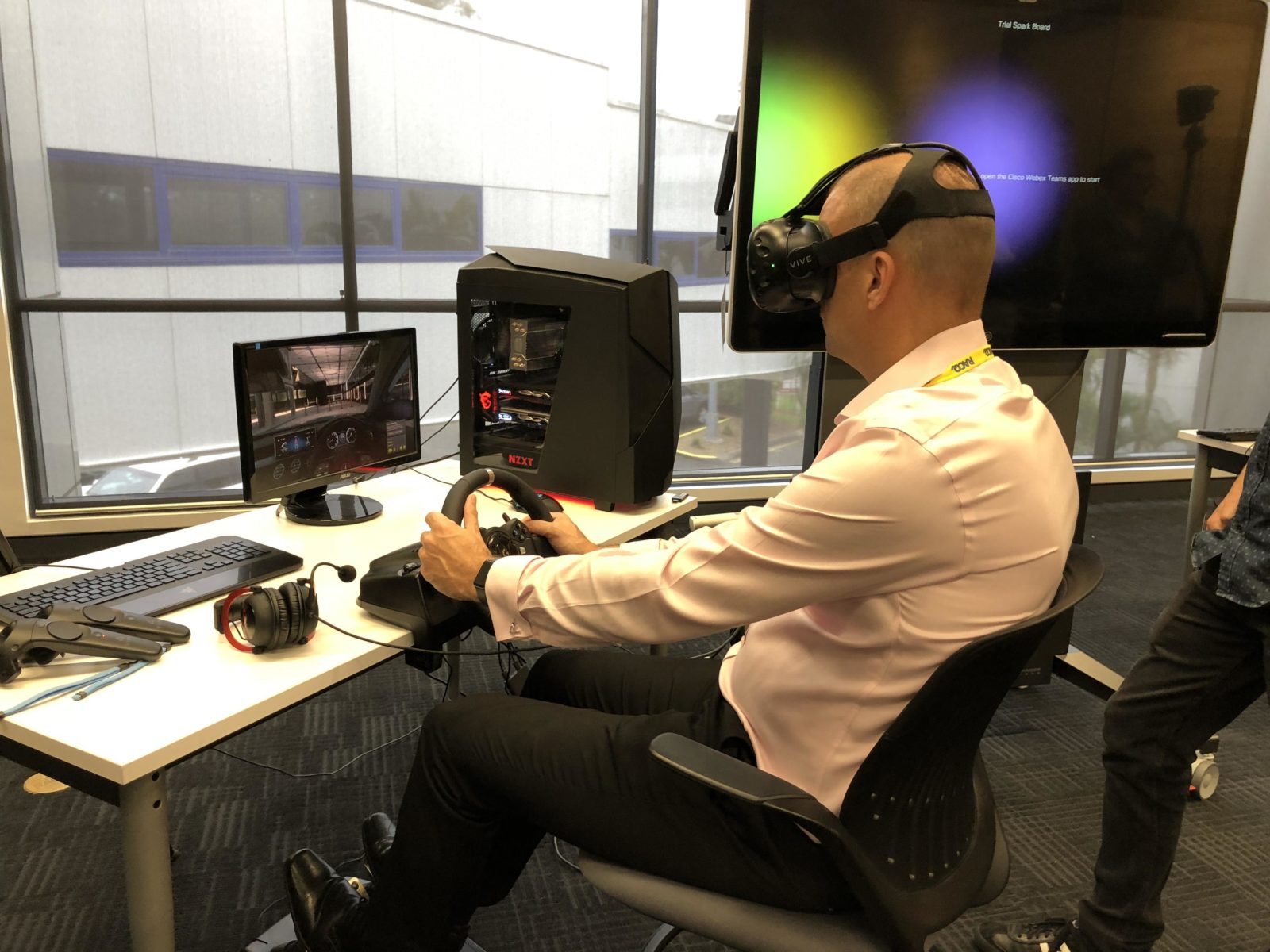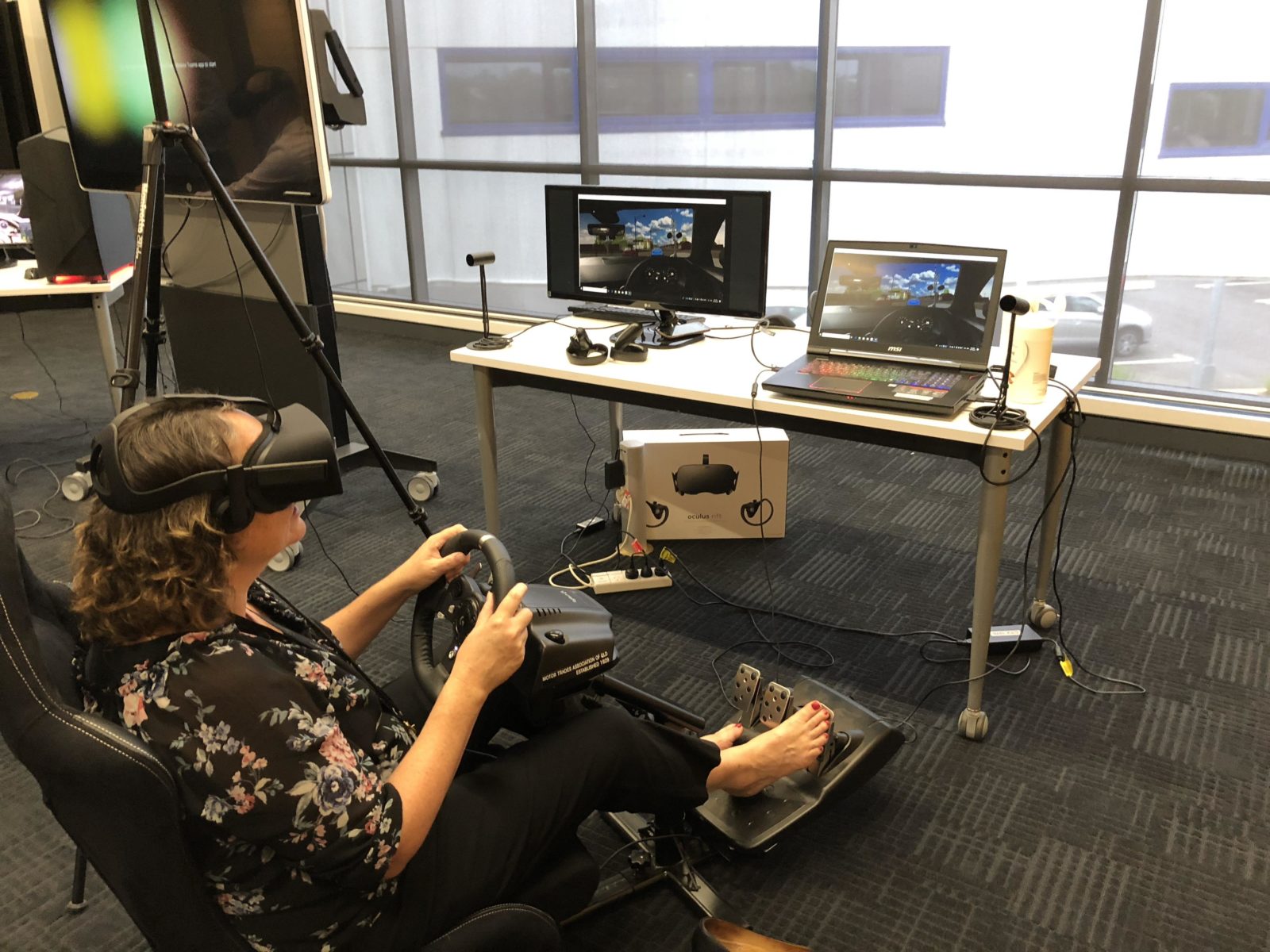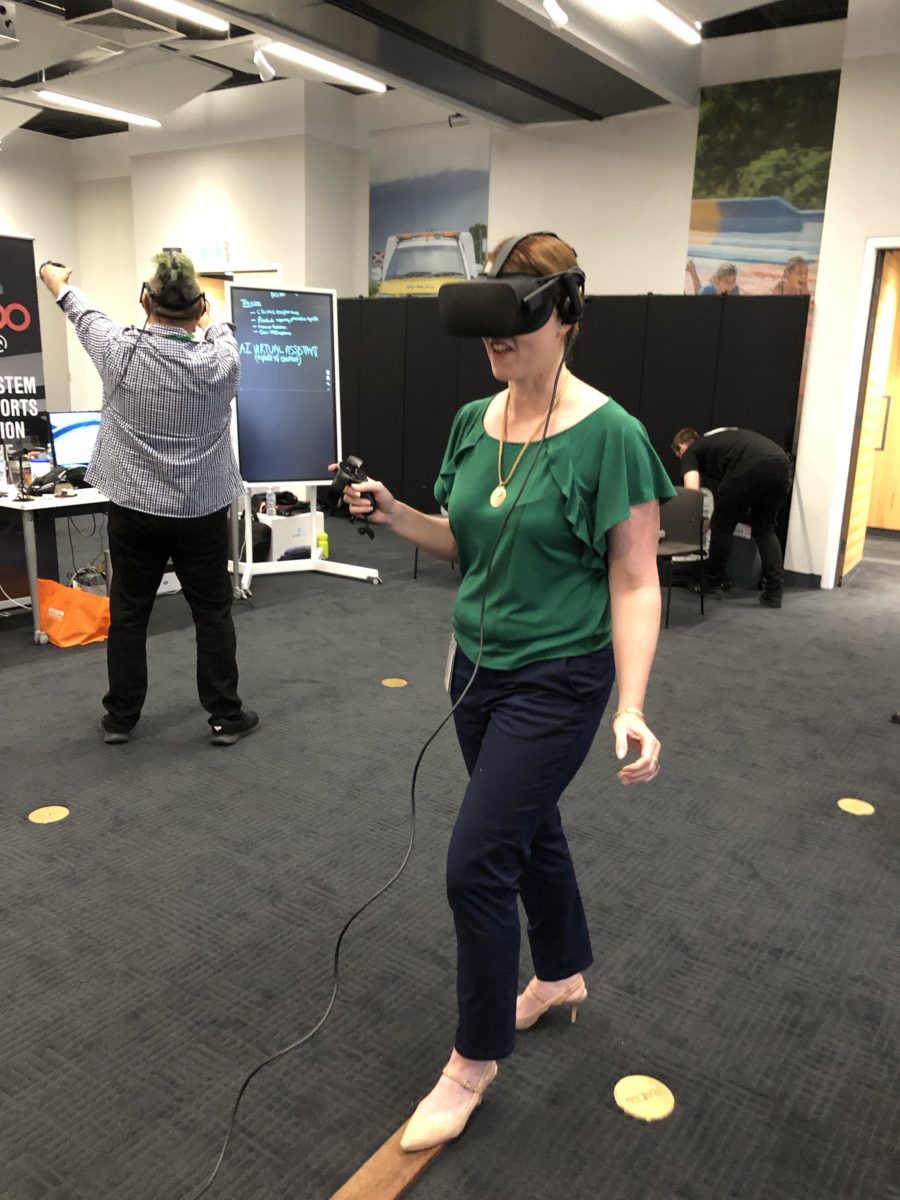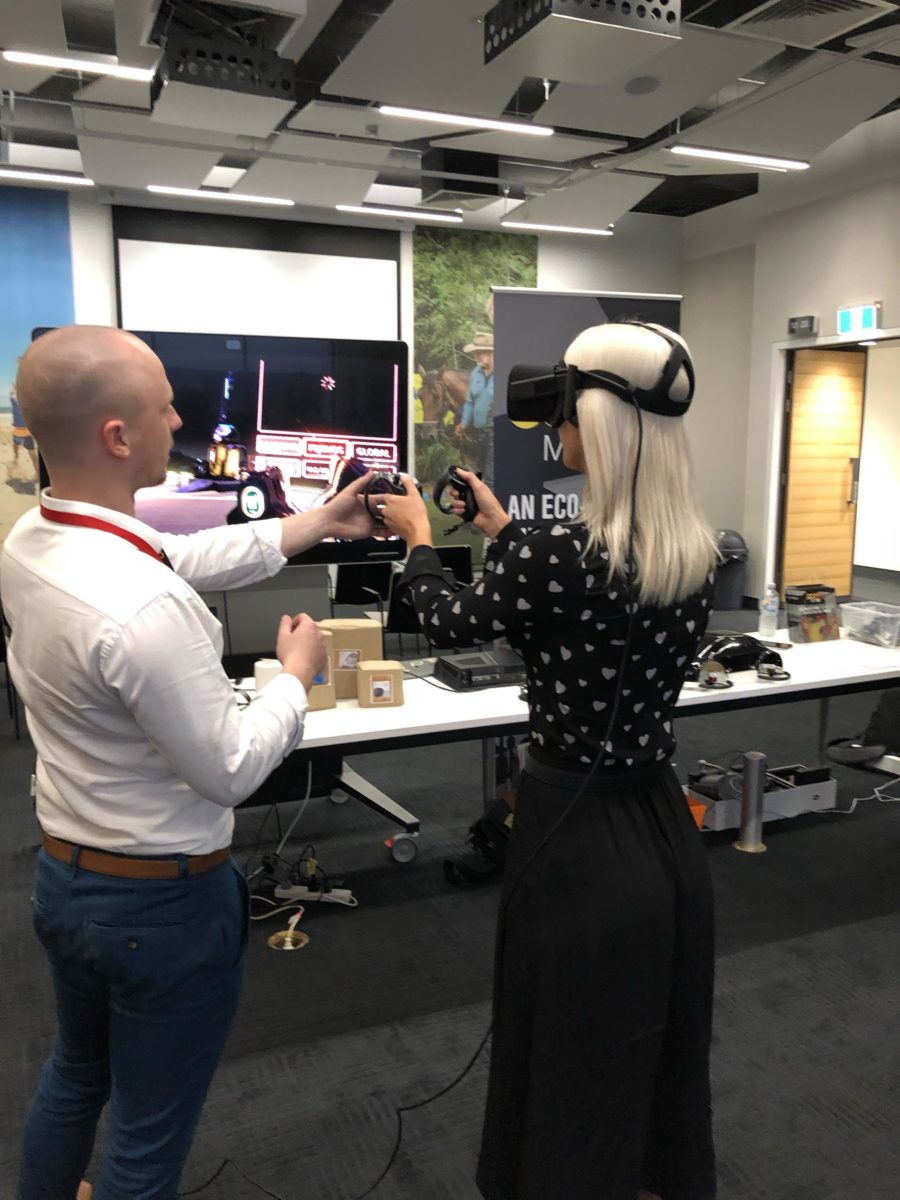What does the future of the automotive industry look like? Our mind often wanders towards self driving cars, soaring above the ground in a sleek hovercraft and electric vehicles yet our imagination rarely explores how our user data collected when behind the wheel would fit into this futuristic framework. A company which is delving into this space and its implications to their customers is RACQ. As part of the internal innovation strategy RACQ collaborated with Immerse Enterprise to host an internal Immersion Day to explore the applications of 3D technologies and how it could add value to both their staff and customers.
The purpose of the event was to provide some insight into how virtual reality and immersive technologies could play a significant role in the future of the automotive industry. The experiences on showcase were specifically designed to demonstrate how many sectors of the industry can benefit through VR, especially in the realm of hazard reduction, driver training and education as well as modelling prototypes of innovative vehicle design. Also available were gaming and psychological experiences, demonstrating the broad application virtual reality can be applied for.

By hosting the Immersion Day, RACQ was able to create an opportunity to provide their staff with an experience that might not come around often, taking part in a fully immersive, virtual driving exercise in a simulated environment. This represents an exciting step towards implementing the technology within the automotive industry in the not so distant future as it allows staff to experience first hand how virtual reality looks and feels, especially in the context of being behind the wheel. This was also the intention behind showcasing the numerous other virtual reality applications on the day. There is no better way to grasp the true potential of immersive technology than to experience it.
Another element to this type of experiential technology is that user data can be collected and interpreted for the purpose of driver education, training and user performance . This opens up multiple opportunities, from changing the way we learn to drive, treating the fear of driving in a safe environment and further research and studies into human health and behaviour when navigating real time obstacles in 3D space.

Immerse Enterprise also showcased our vehicle customisation platform that allows users to interact with a vehicle in a virtual space and make changes to the model and see those alterations in real time.
A further experience booth on offer at the RACQ Immersion Day event was dedicated to showing Motor Trades Association Queensland (MTAQ) and NXG3N Robotics project. The virtual showroom demonstrated the final development of a Flying Car which is currently in projection, called the Pegasus Flying Car, which was also demoed in virtual reality at Myriad 2018 earlier this year. The prototype is not just a look into the future either, the Pegasus Flying car is being developed right now with the team at NXG3N landing the project on the Robotics Roadmap for Australia due to its practical, functional design and feasibility.
You can learn more about the Pegasus Flying Car VR Showroom we created by checking out our portfolio summary of the experience which touches on how virtual reality can be used in showcasing large scale, physical developments that are yet to be completed.

Sineth Mendis, Innovation Manager at RACQ, pinpointed the uniqueness of the VR experience by stating “It’s unlike any other technology because it actually tricks your brain into thinking it’s real and that is the fully immersive experience”. It’s not just it feels real or looks real, to our brains, that is our reality. This is largely due to the fact that a large portion of our sensory data is being influenced exclusively through the digital environment.
With staff spending a day experimenting with immersive technologies and becoming familiar with its applications, the goal was to inspire innovation and to brainstorm how future applications of the technology could be integrated into industry. While RACQ is mainly focused towards providing insurance solutions, other arms of the organisation could play a part in adopting the technology for a whole range of uses and this is where our aim was to really unleash the imagination of the internal departments.

Throughout the day staff were encouraged to collect ideas which will be fed back into the innovation team, and used to direct where RACQ will invest in immersive technology applications. Possibilities are essentially endless with applications in driver safety and training, vehicle design and prototyping, vehicle customisation, driver assessment, traffic simulations which take into account varying conditions and even accidents as well as improving technologies found within vehicles to create a more efficient, innovative and sustainable automotive industry.
We want to give a big thank you to the entire team at RACQ for having us host the Immersion Day and showcasing the incredible potential for virtual reality and the automotive industry to really come together and provide for new and exciting opportunities in our increasingly digital world. We look forward to working together with RACQ in the future and seeking out how the technology will shape our future experiences behind the wheel.

